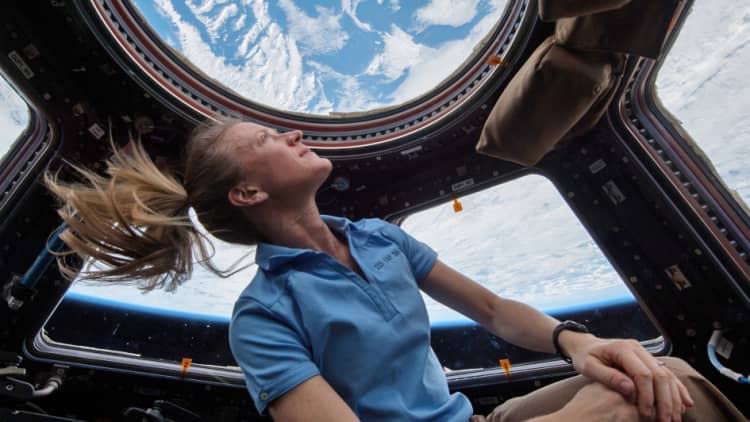President Donald Trump's administration announced plans Monday to end NASA's funding of the International Space Station in 2025 and begin a new $150 million program to build commercial platforms in orbit.
There is only a handful of companies currently working to build private space stations. Two, Bigelow Aerospace and NanoRacks, have hardware on the ISS, while a third is set to launch its first module in 2020.
It is unclear whether the White House proposal means NASA will look to have private entities take over ISS operations. But the chief executives who spoke to CNBC were optimistic about what the proposal means for the future.
- "I really, really appreciate the administration raising the issue now," NanoRacks CEO Jeff Manber told CNBC. "No one wants a gap like we had with the space shuttle program – it was embarrassing and counterproductive."
- "Bigelow Aerospace applauds the focus on commercial partnerships for low Earth orbit and lunar exploration and stands ready to partner with NASA and others," CEO Robert Bigelow said in a statement to CNBC.
- "We would continue on the work that was already begun on the ISS without throwing it all away. Otherwise, entities would need to build new hardware and get it to orbit all over again," Axiom Space CEO Michael Suffredini told CNBC.
Each of these companies is building habitable craft to continue humanity's presence in low Earth orbit. NanoRacks has multiple services on board the ISS, including a system which deploys small satellites from one of the modules on board. But NanoRacks wants to begin building commercial habitats out of the upper stages of rockets launched into orbit.
Bigelow Aerospace already has its habitable test module BEAM docked with the ISS. It arrived in April 2016 for a two-year mission to test the durability of the module. The modules built by Bigelow expand once they are deployed in orbit. If the BEAM testing is successful, the company would be able to launch much more cubic footage into space per launch compared with the modules that make up the ISS.
Axiom Space plans to build out the core of its station at the ISS before the existing craft is retired, detaching once Axiom's platform is self-sustaining. Its first module is supposed to launch in late 2020, built by one of the companies that built the ISS.
None of the companies' leaders expressed interest in taking over the ISS, which would be inherently complex due to the multinational nature of the existing platform.
"No one is looking at leasing the ISS, to run the entire station, as the ISS isn't just a U.S. entity," Tommy Sanford, director of the Commercial Spaceflight Federation, told CNBC. "There are agreements in place with almost 30 other nations for the space station."
Those agreements, according to NanoRacks' Manber, mean the ISS has "something for everybody," but from a commercial standpoint "doesn't really get us to where we want to be." With ISS operational costs running around $3 billion per year, there is an underlying disincentive for companies to purchase hardware that was first launched into space in 1998. Instead, each CEO emphasized the ISS as a stepping stone to establishing commercial operations in low Earth orbit.
"Consistency is key," Axiom's Suffredini said, if the U.S. is going to continue to have a human presence in low Earth orbit.
The ISS "is an integrated spacecraft," which means all its parts work together, Aerospace Industries Association vice president Frank Slazer told CNBC. Only a few elements "might be severable," Slazer added, saying that there "are details that have yet to be worked out."
Suffredini likewise noted that "it is very difficult, in a cost-effective way, to take too many of the components off of the ISS."
"We have a few we would like to take with us," Suffredini said. "But a wholesale taking over of the ISS is a very expensive endeavor."
Both Sanford and Slazer said there are concerns regarding a premature termination of the ISS, which Slazer says is committed for service "through 2024, but it has capabilities to go to at least 2028."
Manber, meanwhile, said seven years "is enough time for technology" to be ready for commercial operations in low Earth orbit, adding that NanoRacks "can be ready if the macro political environment allows it."
"Let's keep in mind that this is a market in its infancy and our competition right now are governments," Manber said. "What we're trying to do in space right now is extremely difficult and nuanced. We still need government support, but fortunately we have seen some the most extensive bipartisan support on the space industry's growth over the last decade."
WATCH: Space station celebration



